Razor: Shick G4
Blade: Personna Injector
Brush: Brush Experimental Alpha
Lather: Pereira Sample
Aftershave: Barber No3 Marmara
Additional Care: Alum Block

Razor: Shick G4
Blade: Personna Injector
Brush: Brush Experimental Alpha
Lather: Pereira Sample
Aftershave: Barber No3 Marmara
Additional Care: Alum Block
Razor: Shick G4
Blade: Personna Injector
Brush: Brush Experimental Alpha
Lather: Pereira Sample
Aftershave: Barber No3 Marmara
Additional Care: Alum Block
Simple is often the best, and the patent filed by Frederick E Blodgett in 1911 is the spiritual ancestor to the Blackland Sabre you can buy today.
Described – as most patents – as a new and useful improvement on the state of the art, it was described as a:
…combination of a flat, single-edged, apertured blade, a fiat holder plate, a flat guard plate, means for positioning said blade with respect to said plates, a threaded locking handle for locking the three, and a guard or comb on said guard plate; said positioning means comprising a pair of lugs engaging the blade back edge and a threaded lug engaging the blade aperture, said threaded lug adapted to be engaged by said locking handle.
US patent 1,017,199
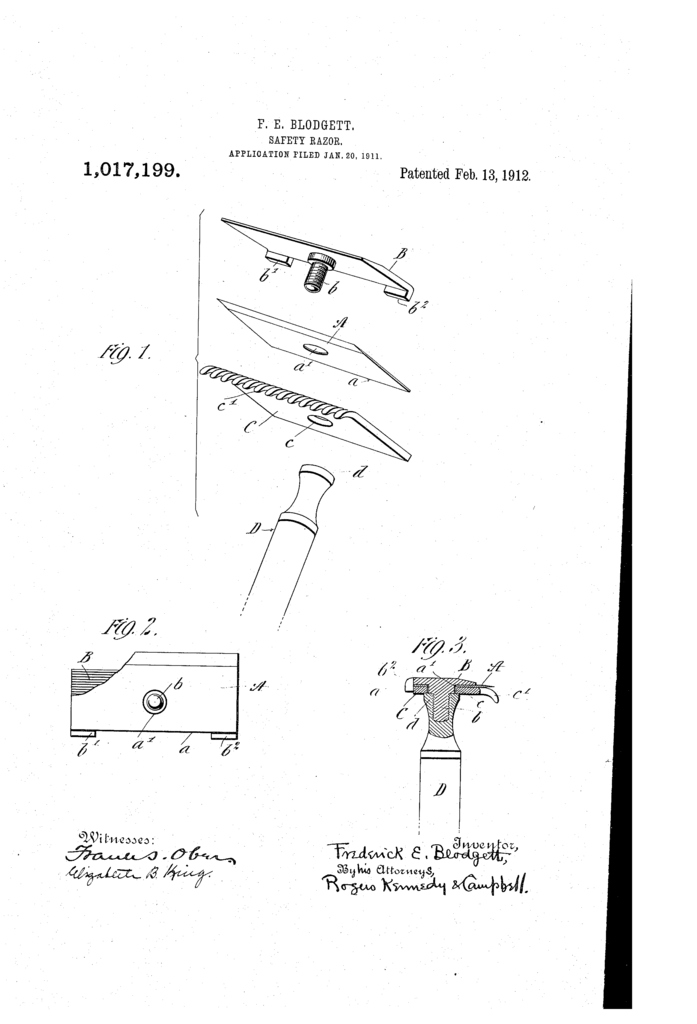
As shown by the Blackland Sabre, this method of construction works – with a couple of minor and obvious modifications – just as well today as it did almost one hundred and ten years ago.
Full patent available on Google Patents, as usual.
Razor: Shick G4
Blade: Personna Injector
Brush: Vie-Long #12705B
Lather: Pereira Sample
Aftershave: Barber No3 Marmara
Additional Care: Alum Block
For the non-americans out there – out here, really, since I’m not an American – the end of November is less about Thanksgiving and more about Black Friday. Or Black Week, even…
Nothing to do with Black Lives Matter – although honestly I feel that ought to be more important – and all to do about getting stuff for less. Stuff like razors, brushes, shaving soaps and books.
Yes, books. The Kindle edition of my book, in particular, will be on sale from Friday the 27th of November at 0000 PST (0800 GMT) and for one (1) week after that.

Razor: Shick G4
Blade: Personna Injector
Brush: Wilkinson Sword Badger
Lather: Dalane d’men Energenic
Aftershave: Barber No3 Marmara
Additional Care: Alum Block
Razor: Schick “Lady Eversharp”
Blade: Personna Injector
Brush: Vie-Long #13051M
Lather: Pereira Shavery Baron’s Choice
Aftershave: Barber No3 Marmara
Additional Care: Alum Block
Learning to shave with a safety razor is – arguably – about learning to control the angle and the pressure. And the Young Any-Angle Razor – sold by Young Safety Razor Co of Pennsylvania – aimed to take the angle out of the equation. Not – mind you – in the way we think about the angle today,1 but in the obliquity between the edge and direction of travel. In a way, Mr Elmer I Young was trying to automate the Gillette Slide before the Gillette Slide was a thing.2
Mr Young’s razor was – apart from the ability to adjust angle of the head – a fairly straight forward single edge, closed guard, hoe style razor. Patent filed in 1909 and granted in 1910, the invention aimed to:
…provide a safety razor in which the blade holding means can be quickly and positively adjusted so that the cutting edge of the blade may lie obliquely to the direction of movement of the blade to give a shearing cut.
US Patent 973,734
This was done by a setscrew, which – by means of a knurled knob – tightened the blade, guard and blade holder3 against an eye formed at the top of the handle. Around said eye, and also on the blade holder, was a number of projections and dimples, which were meant to keep the head from slipping once the set screw was tightened.
The drawing makes the whole thing a little easier to understand:
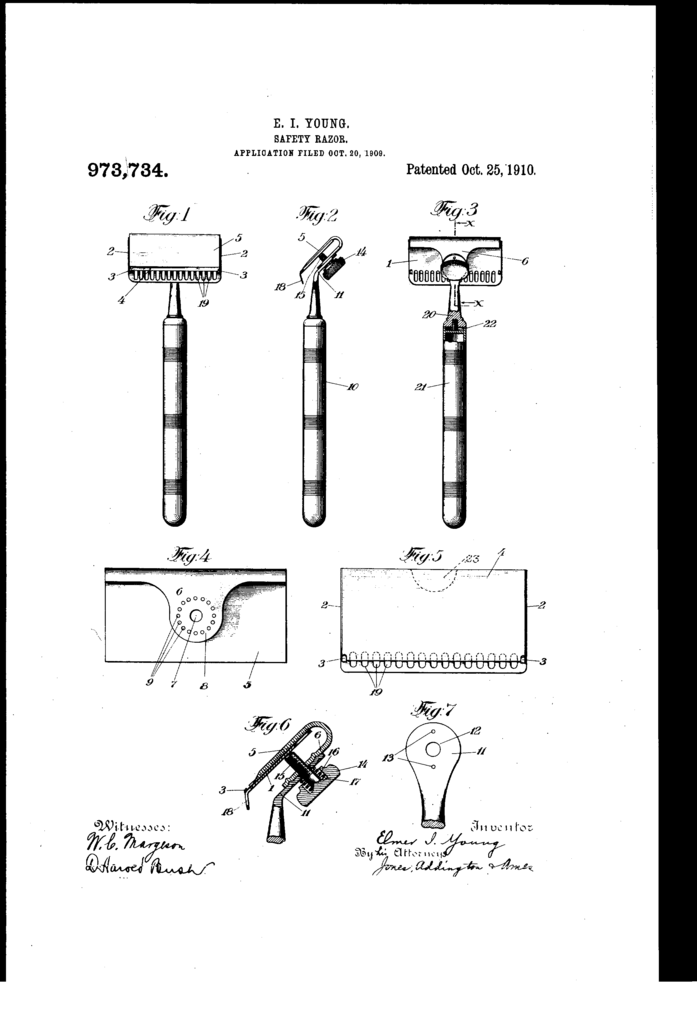
The Young “any-angle” razor was moderately successful as far as I can tell, not only being patented but also manufactured and offered for sale. At least for a couple of years; Waits’ Compendium shows a late 1911 advertisement, and I found the following one from 1912 while browsing the web:
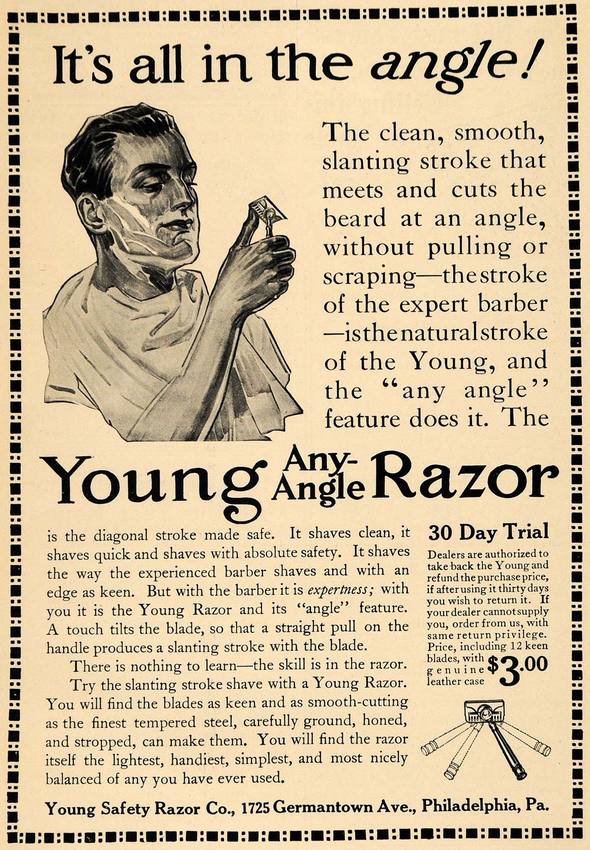
While this was not the last attempt to make a razor with a sideways tilting head – Otto Spahr’s razor come to mind – I think we can all agree that the potential benefit of the Any-Angle can be negated by improving the shavers technique. When that comes in addition to a somewhat fiddly head that requires the shaver to keep track of several parts while changing blades, I can see why the Young Any-Angle Razor seems very rare today. Which is a shame, since it seems like a well made razor that ought to work with a GEM blade.
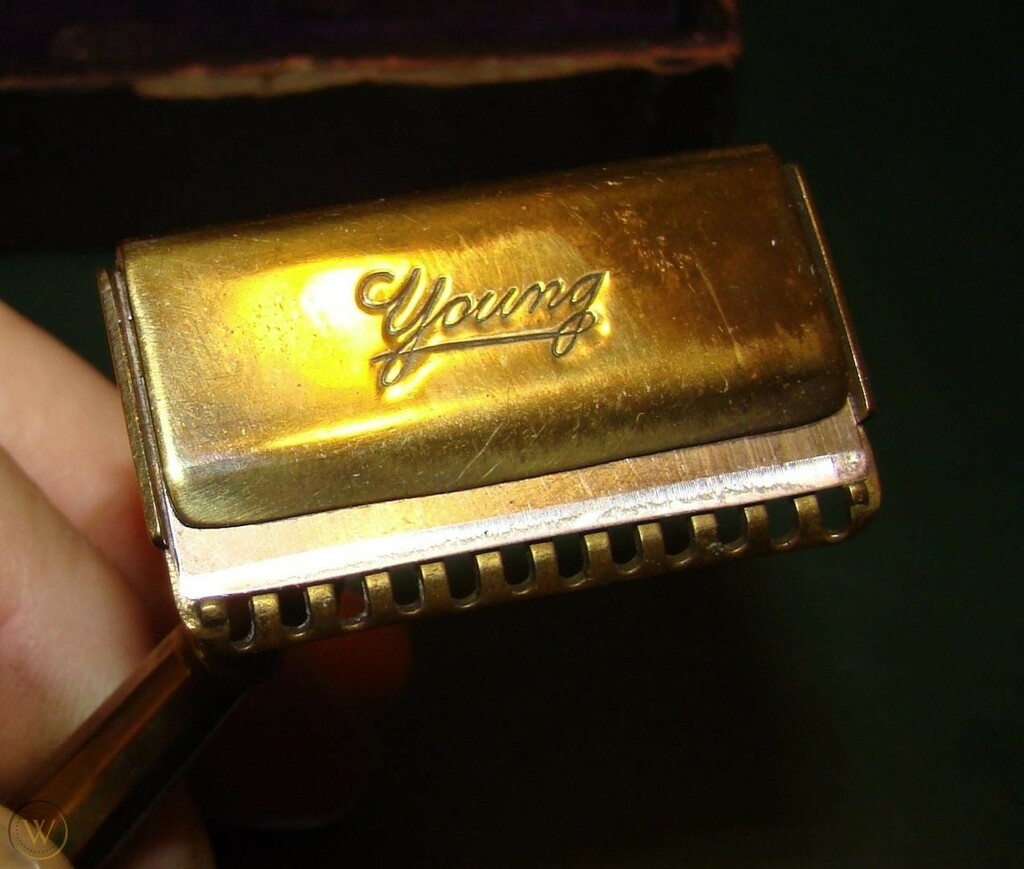
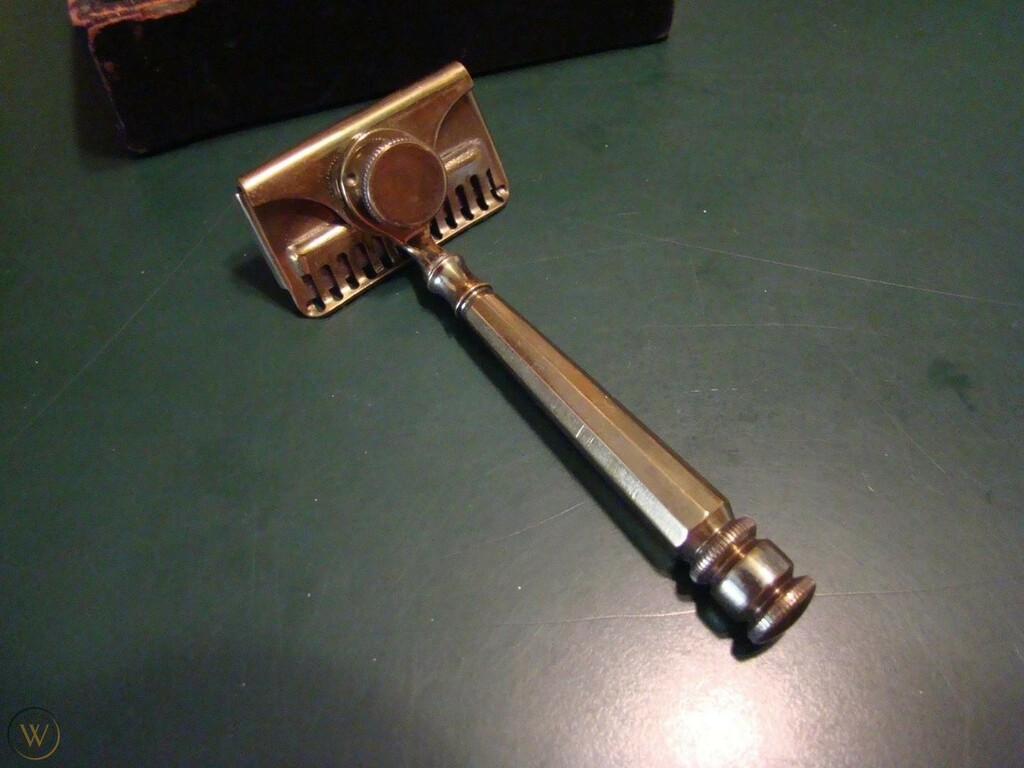
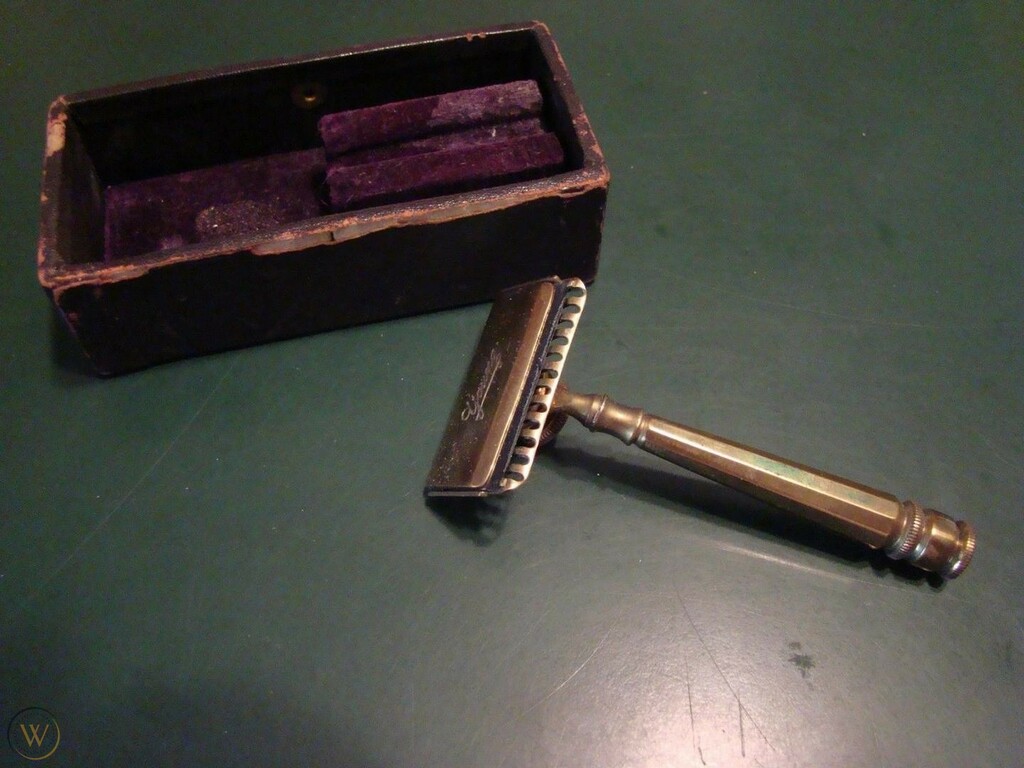
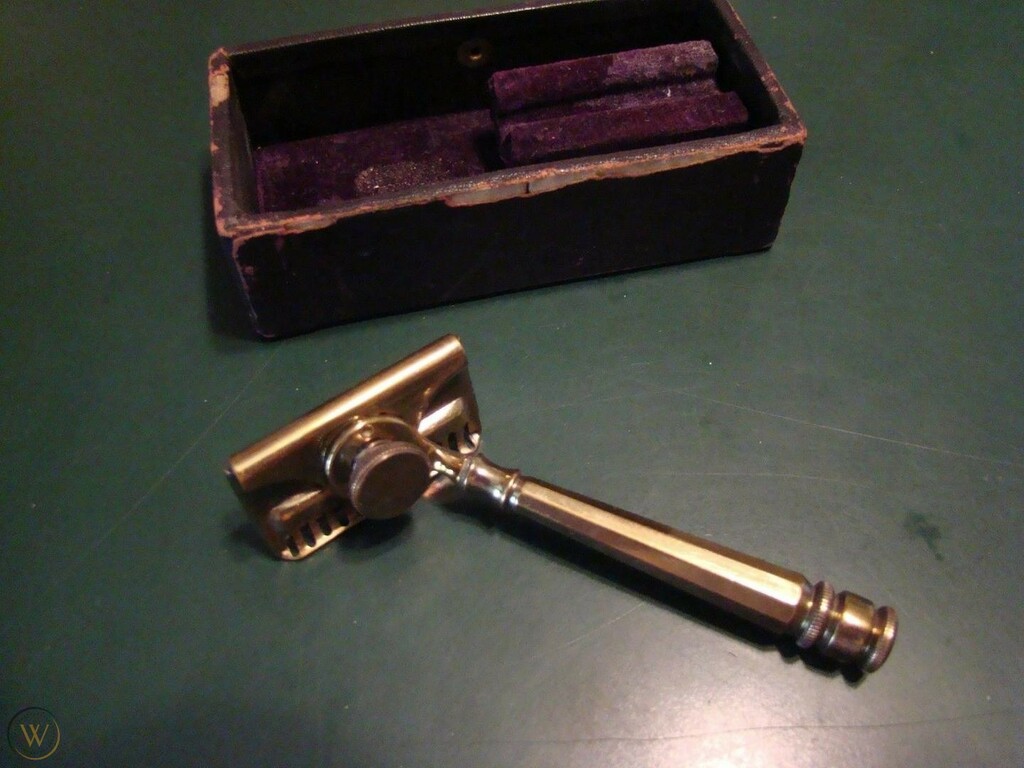
The full patent can be read at Google Patents, for those interested.
1) That is, the angle between the blade and the skin.
2) Something Gillette themselves looked into almost twenty years later.
3) What we today would refer to as the razor’s head.
Razor: Schick “Lady Eversharp”
Blade: Personna Injector
Brush: Vie Long “American style” 50/50
Lather: Proraso Menthol & Eucalyptus
Aftershave: Barber No3 Marmara
Additional Care: Alum Block
There is more to the shave than just a razor. You will need a brush, a shaving soap or cream, a mirror, and somewhere to store it all. And it was the last bit that Marcus B Behrman filed a patent for in 1922, on behalf of the American Safety Razor Corp.
The ORC of the patent is – quite honest – far from good, but the scanned images are good.
In short, it’s a small cabinet with two shelves. One with slots to hold the brush, razor and cream, one plain for holding blades and other bits and bobs. A pocket in the door holds the mirror, and a few holes in the bottom helps circulate the air. And that is – as they say – that.
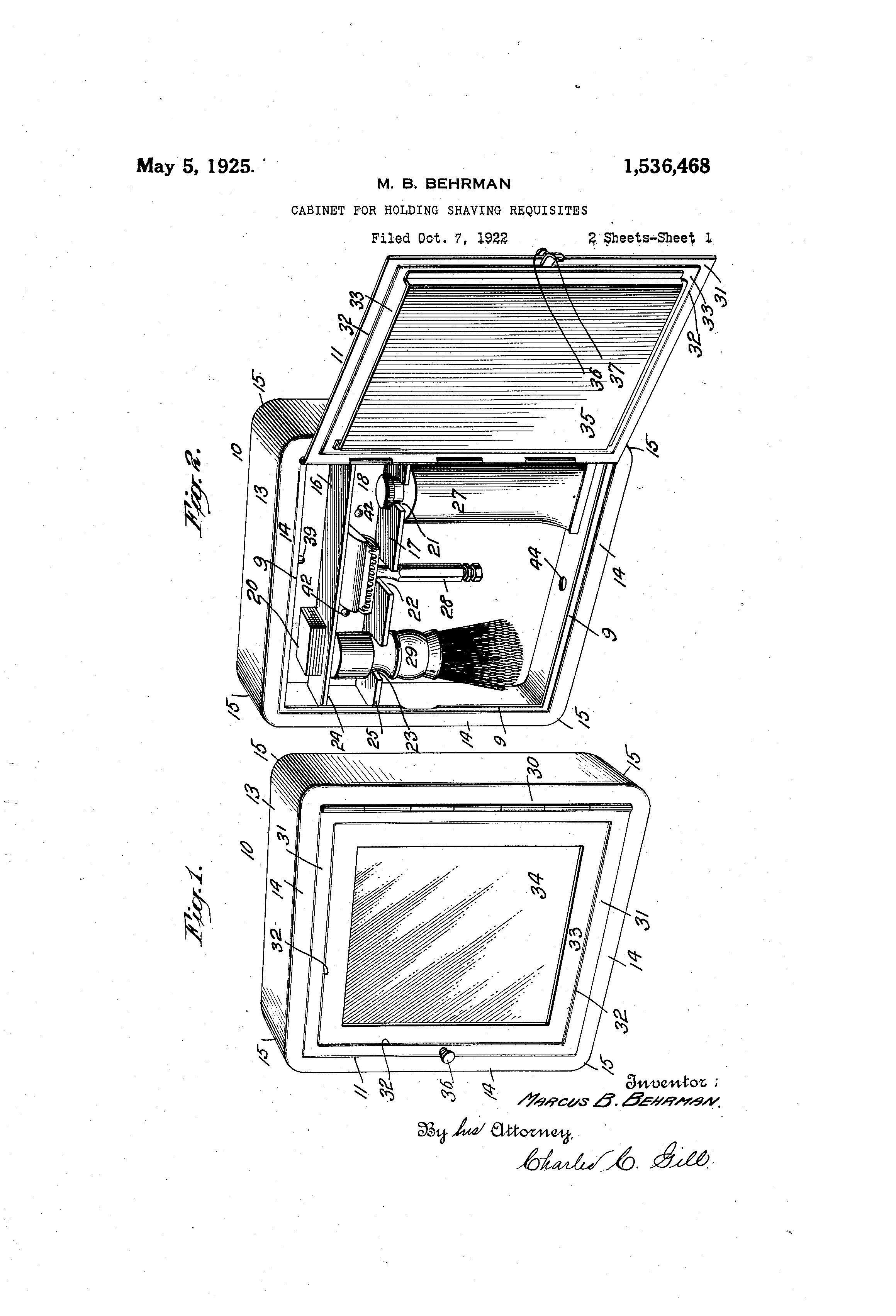

The full patent can be read at Google Patents – I suggest downloading the PDF and read that instead of the OCRed text.